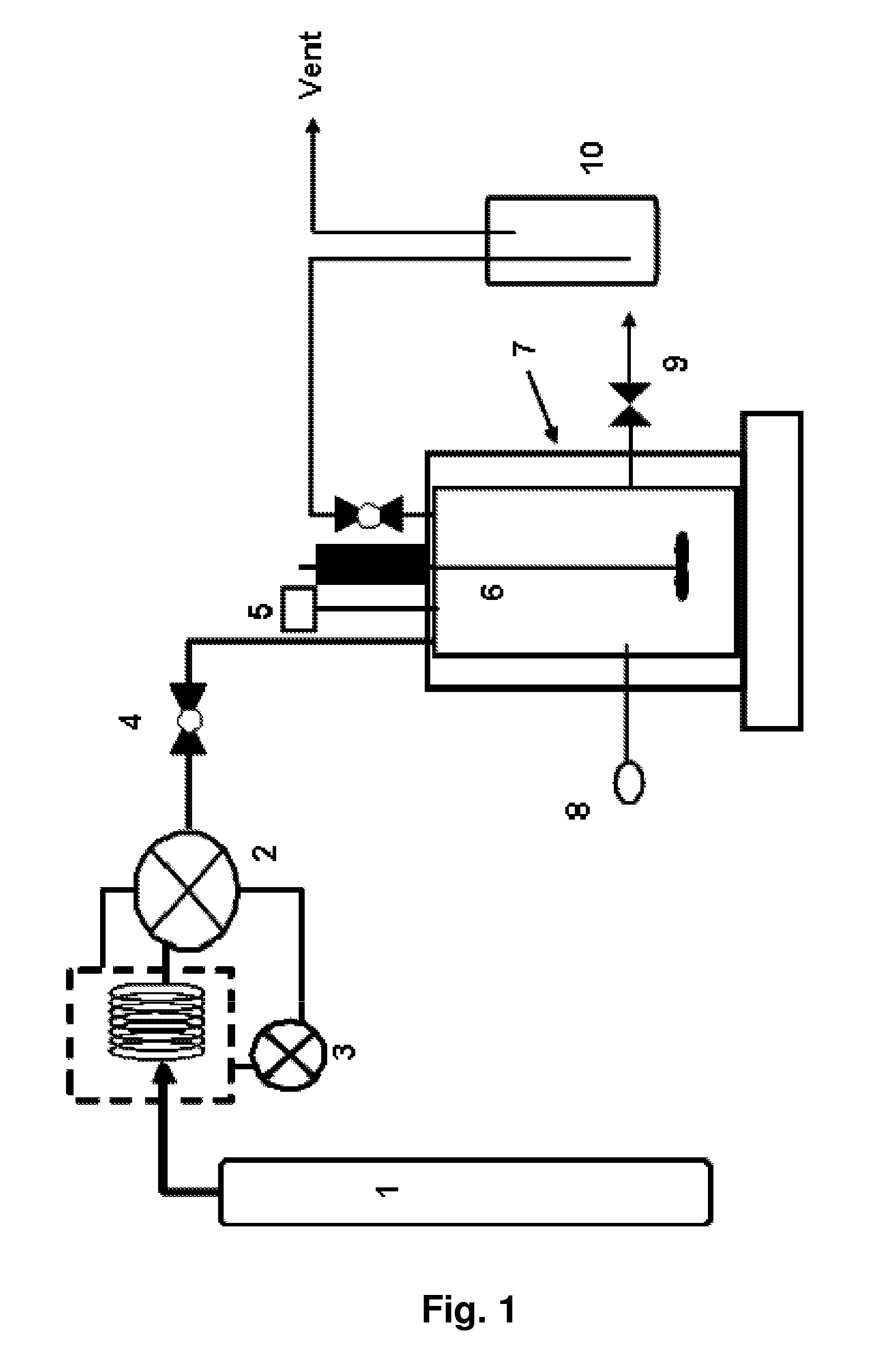Organometallic catalyst and preparation thereof
a technology of organic catalysts and catalysts, which is applied in the field of organic catalysts, can solve the problems of diethyl zinc, toxic, carcinogenic and flammable organic solvents like toluene or benzene being used in the preparation of znga catalysts, and the use of toxic, carcinogenic and flammable organic solvents such as toluene or benzene, so as to achieve the effect of increasing the catalytic activity of zng
- Summary
- Abstract
- Description
- Claims
- Application Information
AI Technical Summary
Benefits of technology
Problems solved by technology
Method used
Image
Examples
Embodiment Construction
[0101]Numerous embodiments are described in this patent application, and are presented for illustrative purposes only. The described embodiments are not intended to be limiting in any sense. The invention is widely applicable to numerous embodiments, as is readily apparent from the disclosure herein. These embodiments are described in sufficient detail to enable those skilled in the art to practice the invention, and it is to be understood that other embodiments may be utilized and that other changes may be made without departing from the scope of the present invention. Accordingly, those skilled in the art will recognize that the present invention may be practiced with various modifications and alterations. Although particular features of the present invention may be described with reference to one or more particular embodiments or figures that form a part of the present disclosure, and in which are shown, by way of illustration, specific embodiments of the invention, it should be ...
PUM
| Property | Measurement | Unit |
|---|---|---|
| reaction time | aaaaa | aaaaa |
| temperature | aaaaa | aaaaa |
| pressure | aaaaa | aaaaa |
Abstract
Description
Claims
Application Information
 Login to View More
Login to View More - R&D
- Intellectual Property
- Life Sciences
- Materials
- Tech Scout
- Unparalleled Data Quality
- Higher Quality Content
- 60% Fewer Hallucinations
Browse by: Latest US Patents, China's latest patents, Technical Efficacy Thesaurus, Application Domain, Technology Topic, Popular Technical Reports.
© 2025 PatSnap. All rights reserved.Legal|Privacy policy|Modern Slavery Act Transparency Statement|Sitemap|About US| Contact US: help@patsnap.com



